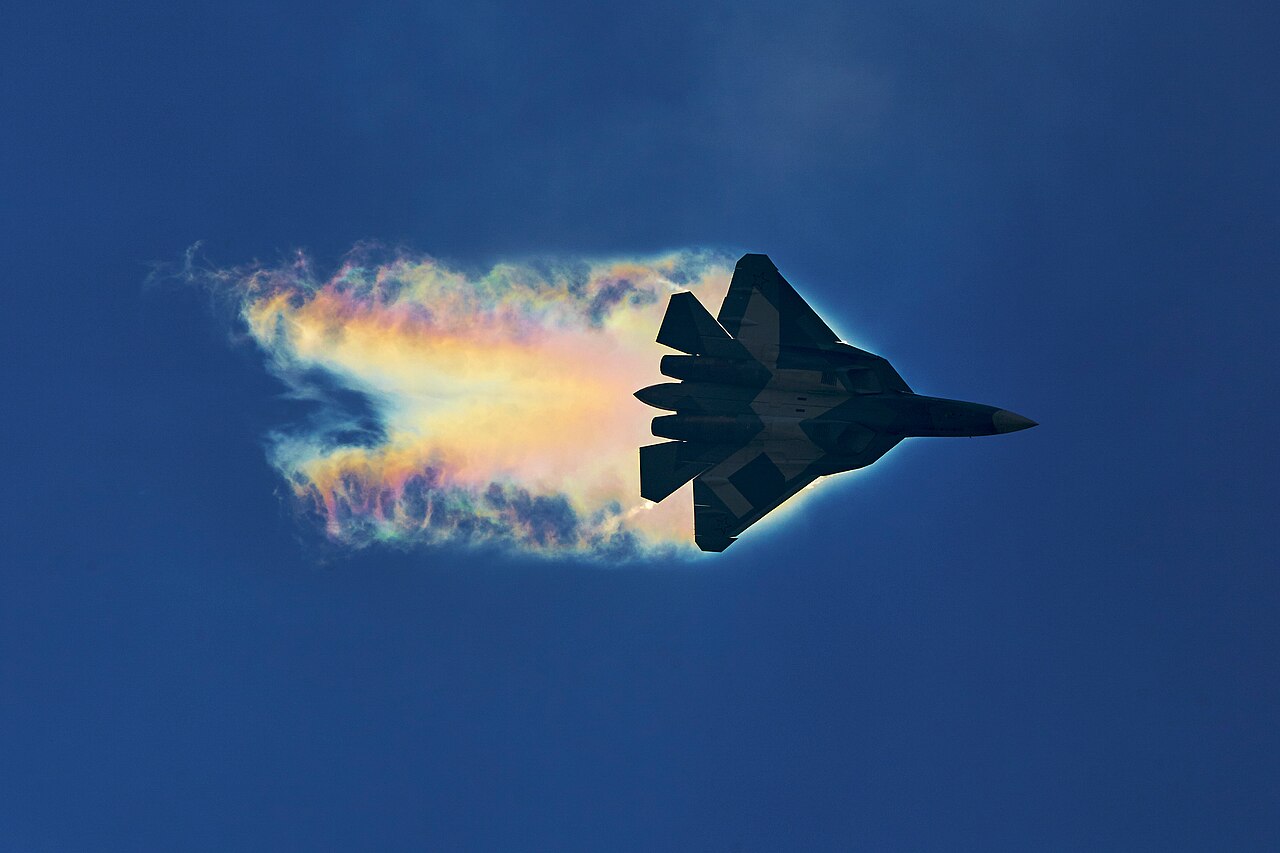The Ukrainian Air Force has claimed that on April 25, the Russian military deployed its most advanced fighter jet, the Su-57, in an attempt to target Kryvyi Rih, a city situated in central Ukraine.
US CH-53K King Stallion Packs A Punch – Gets Refueled Mid-Air While Carrying F-35C Stealth Fighter
Ilya Yevlash, the Head of Public Relations for Ukraine’s Air Force, revealed in an interview on a national 24/7 newscast that Russian forces have utilized the Su-57 aircraft, albeit cautiously, as they are aware of the potential threat posed by Ukrainian air defenses.
He said, “The Russians have already employed the Su-57 aircraft, but they are attempting to keep it at a safe distance since they are aware that it could be targeted by our air defense. This is a really pricey “rattle” that they protect. This is a costly but unique toy for them.”
The attack reportedly involved the launch of a Kh-59 or Kh-69 missile, as per Yevlash. He noted the difficulty in accurately discerning these missiles in flight, highlighting the necessity for expert analysis to classify and evaluate them effectively.
The American think tank Institute for the Study of War revealed, “Ukrainian Air Force Spokesperson Major Ilya Yevlash stated that Russian forces launched the cruise missile from a Su-57 fighter aircraft over the Black Sea and that the missile traveled through Mykolaiv Oblast to Kirovohrad Oblast before changing course towards Kryvyi Rih Raion.”
However, details regarding the outcome of the attack remain undisclosed by the Ukrainian Air Force. This latest deployment follows a previous incident in February, where the Russian Air Force reportedly deployed Su-57 fighter jets in combat operations targeting Ukrainian military positions in Eastern Ukraine.
On February 18, escorted by two Su-35 jets, the Su-57 initiated a missile strike on Ukrainian targets. The aircraft allegedly utilized the advanced Kh-69 stealthy cruise missile specifically designed for the Su-57 platform.
However, due to a technical malfunction, the missile missed its target and crashed in a field, as claimed by Ukraine.
Meanwhile, on April 25, Russian forces conducted missile strikes against Ukrainian railway and logistics infrastructure. Ukrainian military officials reported strikes on logistics and railway connection points in Smila, Cherkasy Oblast, likely with an Iskander-K missile.
Furthermore, a railway station in Balaklia, Kharkiv Oblast, was reportedly struck by Russian forces, resulting in civilian casualties.
Su-57: Largely Absent From Action
Despite claims of stealth and superiority, the Su-57 aircraft remains conspicuously absent from the front lines of Ukraine, where Russian forces have been engaged in a protracted conflict.
Instead, the Su-57 has been limited to launching missiles from within Russian airspace, a stark deviation from its touted role as a game-changer in modern aerial warfare.
Last year, Russian Defense Minister Sergei Shoigu lauded the Su-57, asserting that the aircraft had performed brilliantly. However, its absence from Ukrainian skies has raised doubts about its operational readiness and effectiveness in a real-world combat scenario.
The cautious approach to deploying the Su-57 suggests that Russia is wary of exposing the aircraft to potential risks, including the possibility of it being shot down or its sensitive technology falling into enemy hands.
In an earlier intelligence briefing, the UK Ministry of Defence said, “Russia is highly likely prioritizing avoiding the reputational damage, reduced export prospects, and the compromise of sensitive technology which would come from any loss of FELON over Ukraine. This is symptomatic of Russia’s continued risk-averse approach to employing its air force in the war.”

Military experts have noted that the Su-57, with its stealth capabilities designed to evade radar detection, could potentially tilt the balance in Russia’s favor. Yet, the reluctance to deploy it suggests a lack of confidence in its performance or a calculated assessment of the risks involved.
Western defense analysts have also seized upon the absence of the Su-57 in Ukraine to question Moscow’s claims of its superiority over Western counterparts like the F-35.
Nonetheless, the decision not to deploy Su-57 directly in Ukraine could be deemed rational, particularly considering that several high-profile Russian weapon systems have allegedly underperformed, or at least not met expectations, in Ukraine.
The reported interception and shooting down of Russia’s Kinzhal and Zircon hypersonic missiles, previously touted as invincible and indestructible, could have embarrassed the Russian military and political leadership.
- Contact the author at ashishmichel(at)gmail.com
- Follow EurAsian Times on Google News




